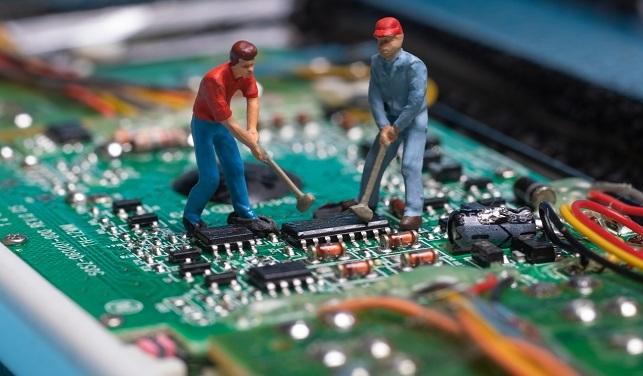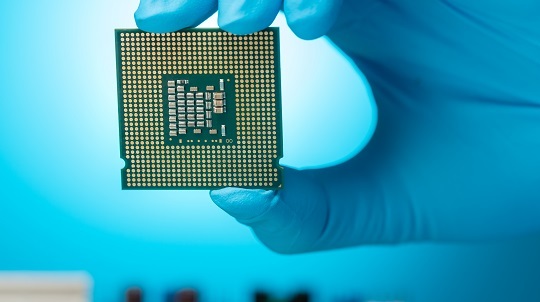
 Data Structure
Data Structure Networking
Networking RDBMS
RDBMS Operating System
Operating System Java
Java MS Excel
MS Excel iOS
iOS HTML
HTML CSS
CSS Android
Android Python
Python C Programming
C Programming C++
C++ C#
C# MongoDB
MongoDB MySQL
MySQL Javascript
Javascript PHP
PHP
- Selected Reading
- UPSC IAS Exams Notes
- Developer's Best Practices
- Questions and Answers
- Effective Resume Writing
- HR Interview Questions
- Computer Glossary
- Who is Who
What is the full form of EEPROM?
Definition of Electrically Erasable Programmable Read-Only Memory (EEPROM)
EEPROM (Electrically Erasable Programmable read-only memory) is a type of non- volatile memory technology that may be programmed, erased and reprogrammed electrically.

It allows for information to be saved even if electricity is removed, making it useful in numerous electronic devices that require information storage. EEPROM is normally used in microcontrollers, smart cards, and other electronic devices.
Working Principle of EEPROM
EEPROM works by using a grid of transistors and capacitors to save binary records. Each transistor and capacitor pair, called a memory cellular, can save a single bit of data. When a voltage is applied to the control gate of the transistor, it permits electrons to pass through the insulating layer, either charging or discharging the capacitor to represent a 1 or 0. To change the saved information, a better voltage is applied to the gate, which causes the insulating layer to interrupt down and erase the stored charge. The memory cell can then be reprogrammed with new data through applying the suitable voltages to the control gate and the other electrodes.
Advantages of EEPROM over other types of ROM
Here are a few advantages of EEPROM over different types of ROM
EEPROM is rewritable, whereas traditional ROMs including prom and EPROM are not. This allows for more flexibility in data storage and updating.
Unlike traditional ROMs, EEPROM no longer requires the use of UV light for erasure, making the system much easier and faster.
EEPROM may be erased and reprogrammed electronically, without the need for a separate device or programmer.
EEPROM gives faster read and write times than conventional ROMs.
EEPROM is non-volatile, which means it keeps information even if electricity is removed, making it ideal for applications that require long-term data storage.
Applications of EEPROM
EEPROM has many applications in numerous electronic devices, which include
Microcontrollers EEPROM is normally used in microcontrollers to store application code and data, as well as to store configuration settings and other essential information.
Smart cards To store data such as user identity, balances of accounts, and records of transactions, EEPROM is used in smart cards.
Automotive electronics EEPROM is used in automotive electronics for storing calibration and diagnostic information, as well as for storing safety codes and different sensitive data.

Client electronics EEPROM is used in many client electronics products, consisting of digital cameras, MP3 players, and different portable devices, to store user settings and other data.
Industrial control systems EEPROM is used in industrial control systems to store configuration and calibration information for sensors, vehicles, and other equipment.
Conclusion
In conclusion, Electrically Erasable Programmable read-only memory (EEPROM) is a non-volatile memory technology that allows for information to be erased and reprogrammed electrically. EEPROM is broadly used in microcontrollers, smart cards, automotive electronics, client electronics, and industrial control systems because of its advantages such as being rewritable, fast read and write instances, and maintaining data even if electricity is removed. With its flexibility and versatility, EEPROM remains an important technology in the field of electronics and data storage.
FAQs
Q1. What is the distinction between EEPROM and flash memory?
Ans: Both EEPROM and flash memory are forms of non-volatile memory that may be erased and reprogrammed, however flash memory can be erased and programmed in larger blocks than EEPROM, making it more suitable for storing larger amounts of data.
Q2. How long does EEPROM data retention last?
Ans: The data retention time of EEPROM varies depending on the manufacturer and the specific product, however it usually lasts for decades, ranging from 10 to 100 years or more.
Q3. Can EEPROM data be corrupted?
Ans: Yes, like any other type of memory, EEPROM information can become corrupted because of different factors including power surges, electromagnetic interference, and exposure to radiation. However, EEPROM data is commonly taken into consideration to be very reliable.

